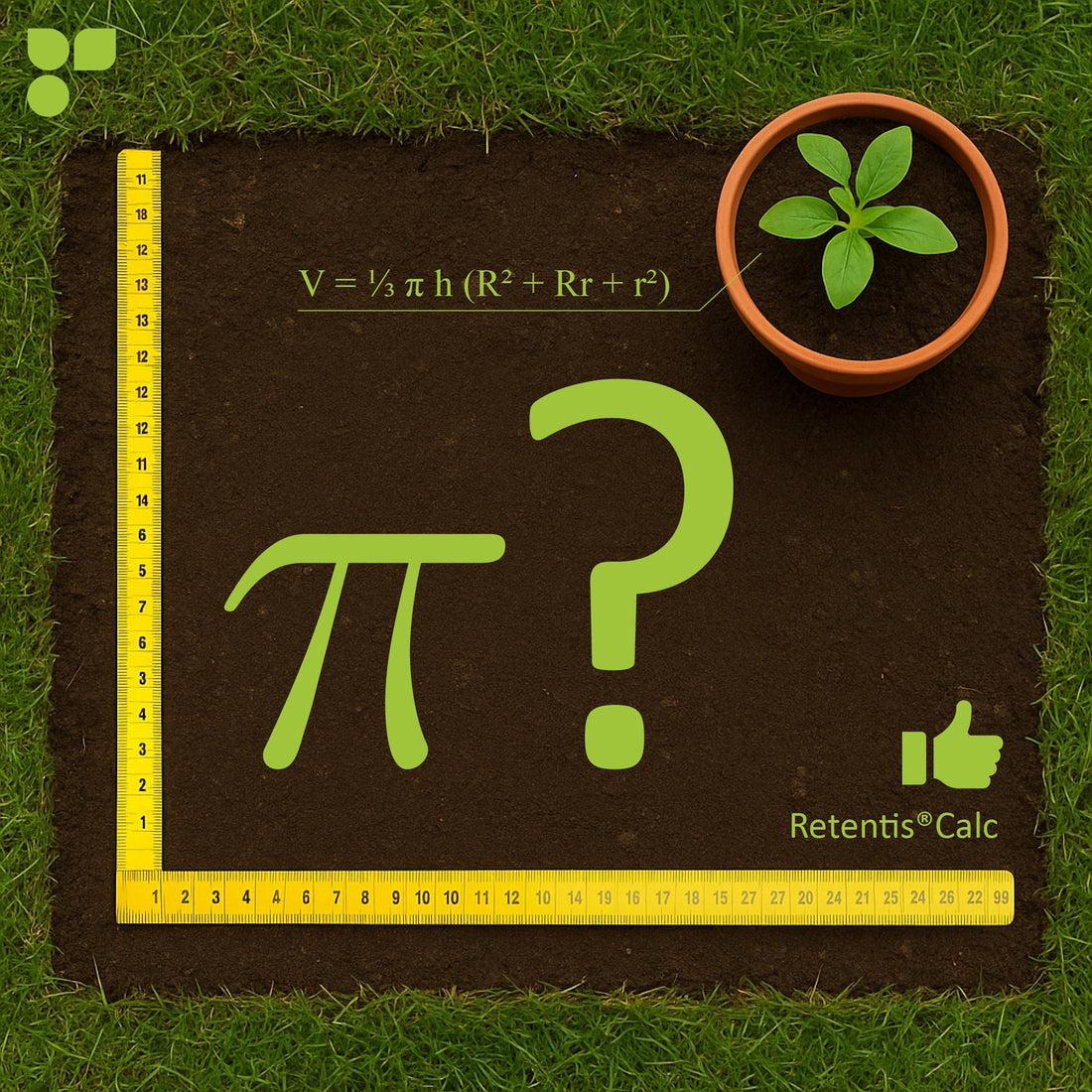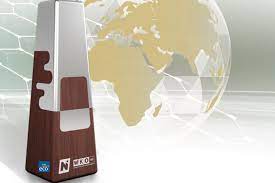
Rule of thumb is a thing of the past – this is how you correctly calculate the application rate for Retentis and substrate!
Share
Rule of thumb is a thing of the past – this is how you correctly calculate the application rate for Retentis and substrate!
Estimates may often suffice in everyday life, but when it comes to optimally applying Retentis and substrate, precise calculations are worth their weight in gold. Only those who know their area and the recommended dosages precisely can save time and money and avoid unnecessary reorders. We'll show you step by step how to precisely determine the required amount of Retentis (for soil improvement and moisture regulation) and substrate (e.g., planting substrate or chamber substrate).
1. Why accurate dosage is important
-
Ensure impact
Retentis only achieves its full effect (e.g., water retention or soil loosening) if the recommended dosage per square meter is adhered to. Underdosing leads to uneven moisture distribution, while overdosing can cause nutrient imbalances. -
Cost optimization
Substrate is usually much more expensive than pure soil. Ordering too much will put a strain on your budget; ordering too little will often result in supply bottlenecks or uneven plant growth if the minimum thickness is not met. -
sustainability
By working in the right proportions, you avoid excess and unnecessary packaging waste. Nature rewards you with healthy soil stability and optimal growing conditions.
2. Determine area: The basis of every calculation
Before calculating quantities for retentis or substrate, you need to know the exact area. We'll briefly summarize two proven methods:
-
With tape measure or measuring wheel
-
Rectangular or square surfaces
-
Measure length (m) and width (m) using a tape measure or measuring wheel.
-
Square footage = length × width.
-
-
Irregular shapes
-
Divide the area into simple shapes (rectangles, triangles, circles).
-
Calculate individual areas and add up all square meters.
-
-
-
Digital surveying
-
Apps like Google Maps, Planimeter or GeoMeasure
-
Set corner points of the area in the satellite view.
-
App calculates square meters automatically.
-
-
Advantage of drones (for large, complex areas)
Drone-based surveying provides precise data even in hard-to-reach areas.
-
Tip: Always allow an extra 5%–10% to compensate for unevenness and measurement inaccuracies.
3. Retentis: Calculate requirements per square meter
Retentis is a soil improver that retains water longer and optimizes soil properties. The manufacturer's recommendation is usually between 30 g and 50 g of Retentis per m² (depending on the application scenario). Here's how to calculate:
-
Determine area (m²)
E.g.: 80 m² lawn area. -
Recommended dosage per m²
Let’s take 40 g/m² as an example (manufacturer’s information). -
Total Retentis amount = area × dosage
- 80 m² × 40 g/m² = 3,200 g = 3.2 kg Retentis. -
Plan for reserves (5%–10%)
10% of 3.2 kg = 0.32 kg
Total: 3.2 kg + 0.32 kg = 3.52 kg (ideally rounded to 3.5 kg or 4 kg pack).
A notice:
For highly permeable soils or very sandy subsoils, pay attention to the upper dosage limit (50 g/m²).
When sowing directly, it may be useful to apply Retentis in layers around individual germination sites (strip application).
4. Substrate: Calculate volume for the correct layer thickness
Whether vegetable cultivation, flowerbed or potted plant – substrate always requires a volume , not just an area.
-
Determine the desired layer thickness
Example: You want a 10 cm thick substrate layer for a raised bed. -
Determine area (m²)
Example: Raised bed floor area = 2 m length × 1 m width = 2 m². -
Calculate volume in m³
- Volume (m³) = Area (m²) × Height (m)
- 2 m² × 0.10 m = 0.20 m³ (which corresponds to 200 liters). -
Conversion to sales units
Substrates are usually offered in liters.
- 1 m³ = 1,000 liters → 0.20 m³ = 200 liters.
→ So you need at least 200 liters of substrate in total. -
Plan for reserves (10%)
10% of 200 L = 20 L → Total: 220 liters (e.g. 11 bags of 20 L each or 2 × 100 L).
A notice:
For planting holes (e.g. trees) the following applies: hole volume + allowance for compaction (about 20%).
For potted plants, simply take the inner pot diameter (cm) and multiply it by the desired substrate height, then convert to liters (π × (r²) × height).
5. Common examples for understanding
Example 1: Reseeding a lawn with Retentis
-
Area : 50 m²
-
Retentis dosage : 35 g/m²
-
Invoice :
50 m² × 35 g/m² = 1,750 g = 1.75 kg.
With a 10% reserve: 1.75 kg + 0.175 kg = 1.925 kg → order around 2 kg of Retentis.
Example 2: Planting bed with substrate
-
Area : 4 m length × 2 m width = 8 m²
-
Desired substrate height : 15 cm = 0.15 m
-
Volume : 8 m² × 0.15 m = 1.2 m³ = 1,200 liters
-
Reserve (10%) : 120 liters → Total: 1,320 liters .
→ For example, this corresponds to 66 bags of 20 liters each (66 × 20 L = 1,320 L).
6. Tips for ordering and use
-
Note package sizes
Retentis is often available in 2 kg, 5 kg, or 10 kg containers. Round up your calculations to the next larger container to avoid interruptions in application. -
Transport unit and storage
Substrate quickly takes up space. Consider transport and storage locations carefully to prevent the loose material from becoming soaked or contaminated. -
Calculate losses
Minor material losses sometimes occur during application (e.g., due to wind with fine-grained retentis). Therefore, it's better to round up rather than estimate too tightly. -
Check humidity level
Retentis is hygroscopic—it tends to bind moisture. In very humid weather, it can clump.
→ Store in a dry place, mix shortly before application and distribute quickly. -
Protect substrate mixture from moisture
Store unopened bags in a dry place on pallets. Once opened, ideally consume them while ripe, as some mixes (especially peat-reduced ones) are sensitive to moisture.
7. Conclusion: No more rough estimates
Whether it's Retentis or Substrate – precise calculations make your work more efficient, cost-effective, and sustainable. In just a few steps:
-
Determine the area correctly.
-
Apply recommended dosage or layer thickness.
-
Calculate volume (m³) or mass (kg).
-
Plan for a 5%–10% reserve.
-
Round up to appropriate packaging sizes.
This way you can ensure that your soil benefits optimally and that plants have the best growing conditions right from the start!
MORE HELPFUL POSTS
-
Using the tape measure method correctly – a classic among surveying techniques
-
Digital measuring with smartphone apps – How to do it without a ruler
-
Soil analysis made easy – The basis for every dosage recommendation
Good luck with the application – with precisely calculated amounts of retentis and substrate!








